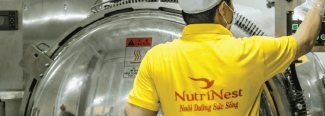
EV manufacturer
Expedite & Scale Advanced Driver Assistance Systems (ADAS) with RenoCube & DevOps

Industry
Automotive industry
Technology
Overview
A leading EV manufacturer has embraced DevOps transformation to accelerate the development of its Advanced Driver Assistance Systems (ADAS) and enhance vehicle safety. By partnering with Renova Cloud and leveraging RenoCube solution, the company has built a scalable, automated, and cost-efficient platform that streamlines ADAS deployment and operations. This shift has enabled seamless collaboration between development and operations teams, improved system reliability, and optimized infrastructure performance, ensuring the manufacturer can continue delivering cutting-edge automotive innovations to the global market.
Key Challenges
Originally, this EV manufacturer relied on on-premises infrastructure to host both its Core and ADAS applications, but as the company sought to expand into new markets, its existing resource provisioning process became a bottleneck. First, the previous platform lacked Infrastructure as Code (IaC), which made it difficult to rapidly provision resources needed for each new region. The challenge is compounded by the massive data and processing demands required for training localized ADAS models. While crucial for effective ADAS, this regionalization leads to increased infrastructure costs, longer development times, and data management complexities. The lack of IaC combined with these factors threatens to slow down new feature releases and limit cost-effective scaling of their entire ADAS platform.
In addition, the time-consuming infrastructure setup delayed deployments, slowing down the overall expansion strategy and making it difficult to scale operations efficiently. To overcome these challenges, the company needed a more agile, scalable, and automated approach to infrastructure management, which explained why DevOps adoption was a must.
Solution
On the one hand, to facilitate the clients’ DevOps transformation, Renova consulted the following best practices:
- Adoption of Infrastructure as Code (IaC) with Terraform enabled automation and streamlined infrastructure management.
- Implementation of the GitOps model ensured scalable and consistent infrastructure management across multiple AWS regions.
- Utilization of Apache Airflow as the primary orchestrator facilitated scheduling and execution of complex data pipelines, integrating with AWS services via Kubernetes Operator and Karpenter.
- Establishment of monitoring and logging with CloudWatch Container Insights enabled collection and storage of container logs and performance data in log groups.
- Use of Karpenter for dynamic compute provisioning allowed efficient processing of large datasets on Amazon S3 and seamless support for various workloads.
- Creation of detailed runbooks ensured effective infrastructure maintenance and troubleshooting, supporting seamless daily operations.
On the other hand, RenoCube offers pre-built integrations with the following AWS services to accelerate the speed and efficiency at which ADAS system operates:
- Karpenter: an AWS open-source node lifecycle management project for Kubernetes that enables automated and dynamic EKS node management. By automatically provisioning nodes based on specific pod requirements and retiring them when no longer needed, Karpenter optimizes workloads with compute resources categorized into general-purpose, memory-intensive, and GPU-intensive groups. Leveraging a 4:6 ratio of EC2 Spot and On-Demand instances, RenoCube tailors infrastructure to client needs, ensuring efficient resource allocation and cost savings.
- Amazon FSx for Lustre: a scalable, high-performance file system that supports compute-intensive workloads and enables efficient data processing. Effective ADAS systems usually rely on real-time data from sensors like cameras, radar, and lidar, which could sum up to a huge amount. FSx for Lustre supports simultaneous data read and write operations, reducing data processing lead times from days to just 2.5 hours through a warm-up strategy that prioritizes Amazon Simple Storage Service (Amazon S3) bucket data using “lazy loading”. This optimization minimizes worker pod delays and prevents data processing crashes, ensuring swift, reliable data transitions and enhanced efficiency for ADAS system development.
- Amazon Simple Storage Service (Amazon S3): used in conjunction with FSx for Lustre to optimize data retrieval and processing times.

Benefits
These benefits provided immediate value to the customer by significantly accelerating deployment times and enhancing global scalability. The automation of infrastructure provisioning and deployment pipelines reduced lead times from several days to less than three hours, enabling faster feature releases and system updates. This efficiency was particularly crucial as the company expanded into Asia, Europe, and the US, where the ability to quickly scale resources and deploy services seamlessly across multiple regions ensured a consistent user experience and operational stability. Additionally, the streamlined processes minimized manual intervention, reducing the risk of configuration errors and downtime, which further optimized performance and reliability across international markets.
Conclusion
By embracing DevOps and leveraging RenoCube, the EV manufacturer successfully transformed its ADAS platform into a scalable, automated, and cost-efficient system. The adoption of Infrastructure as Code, GitOps, and dynamic compute provisioning streamlined operations, reduced deployment times, and enabled seamless expansion into global markets. This transformation not only enhanced vehicle safety and system reliability but also positioned the manufacturer for continuous innovation in the fast-evolving automotive industry.



